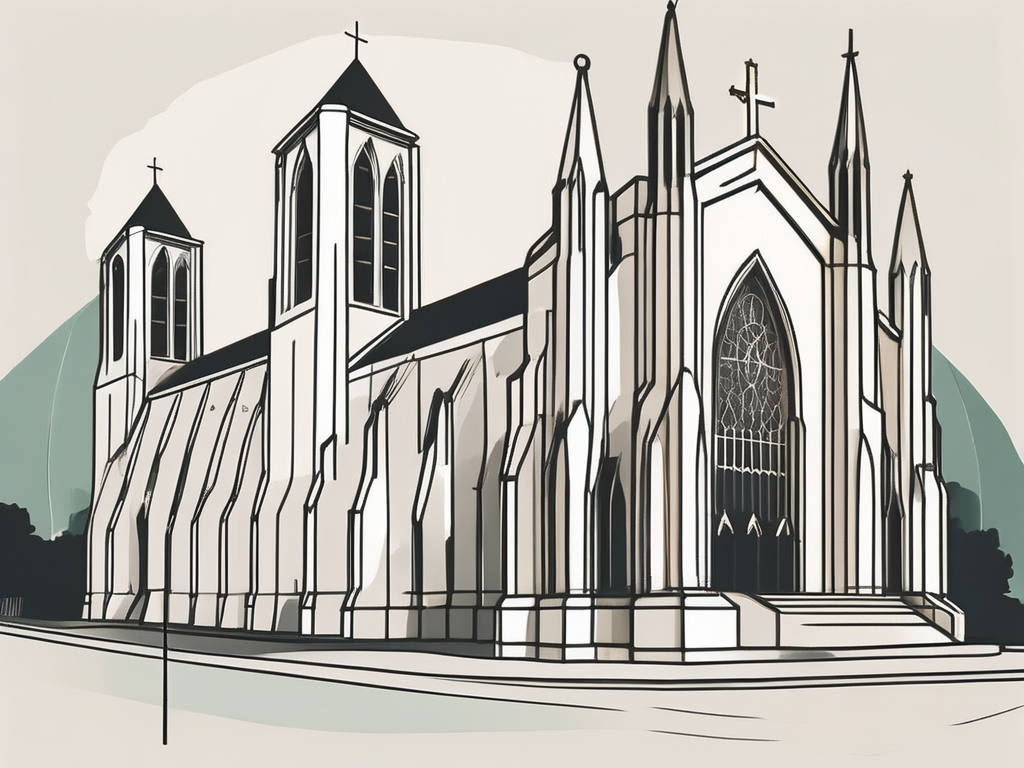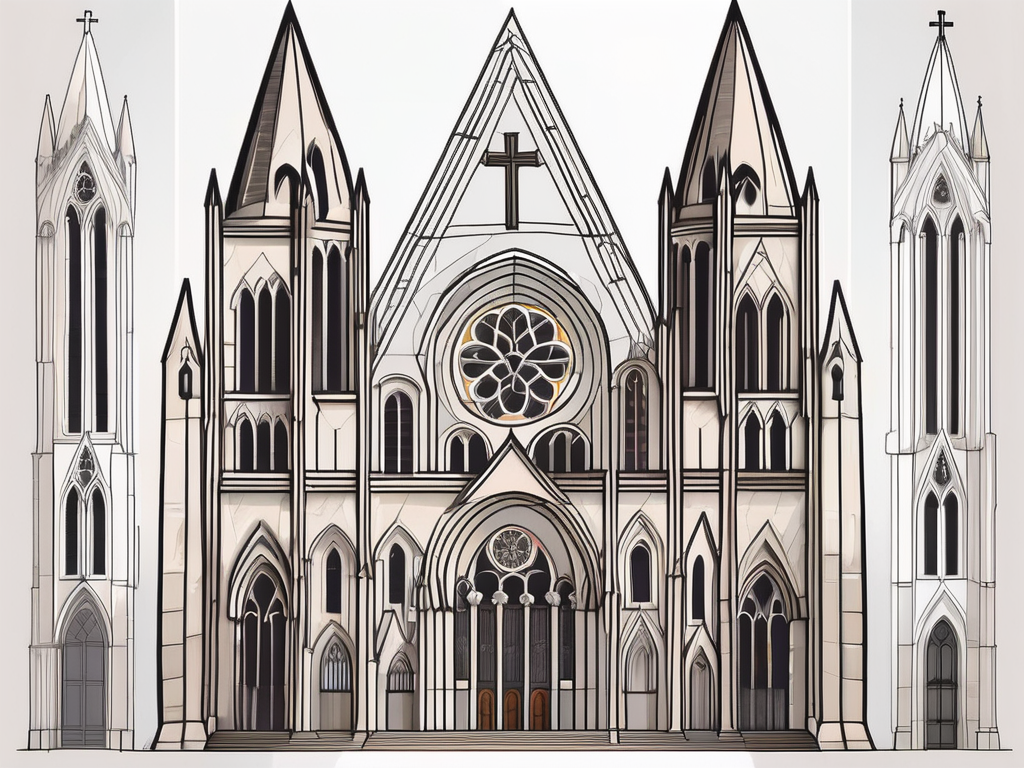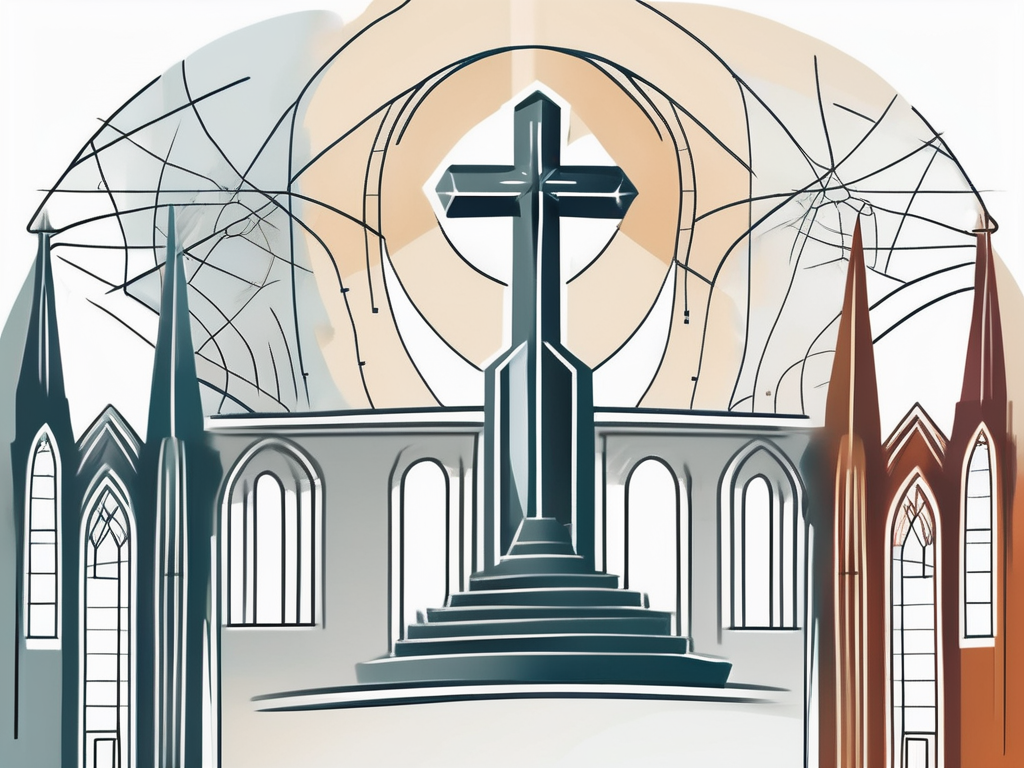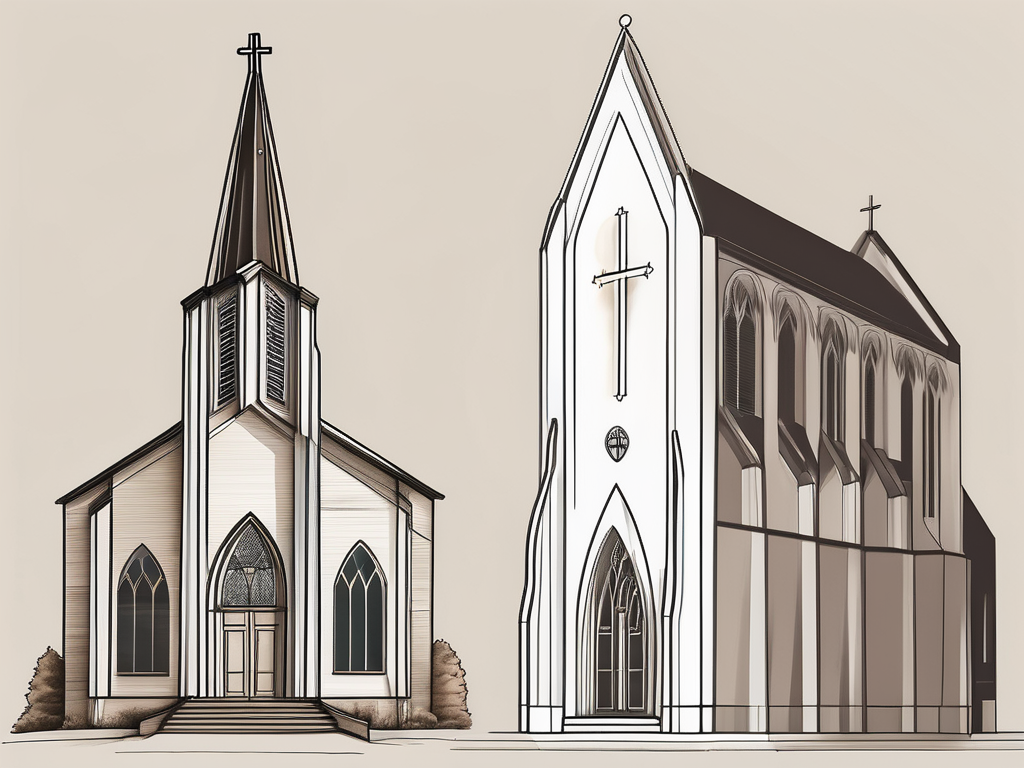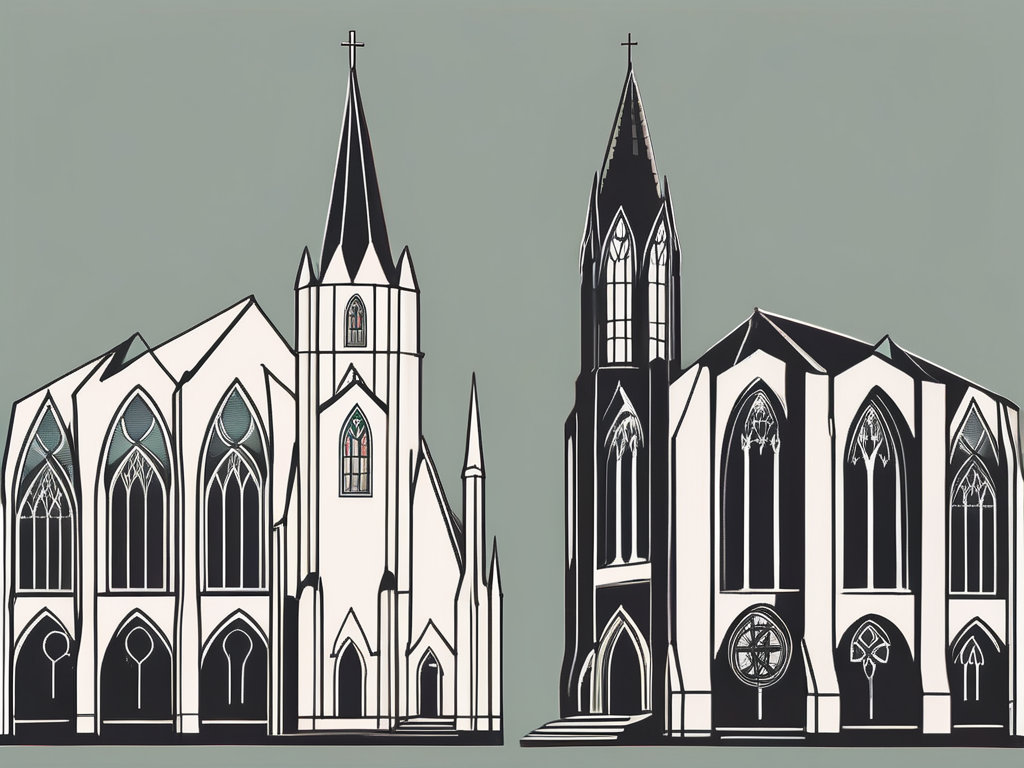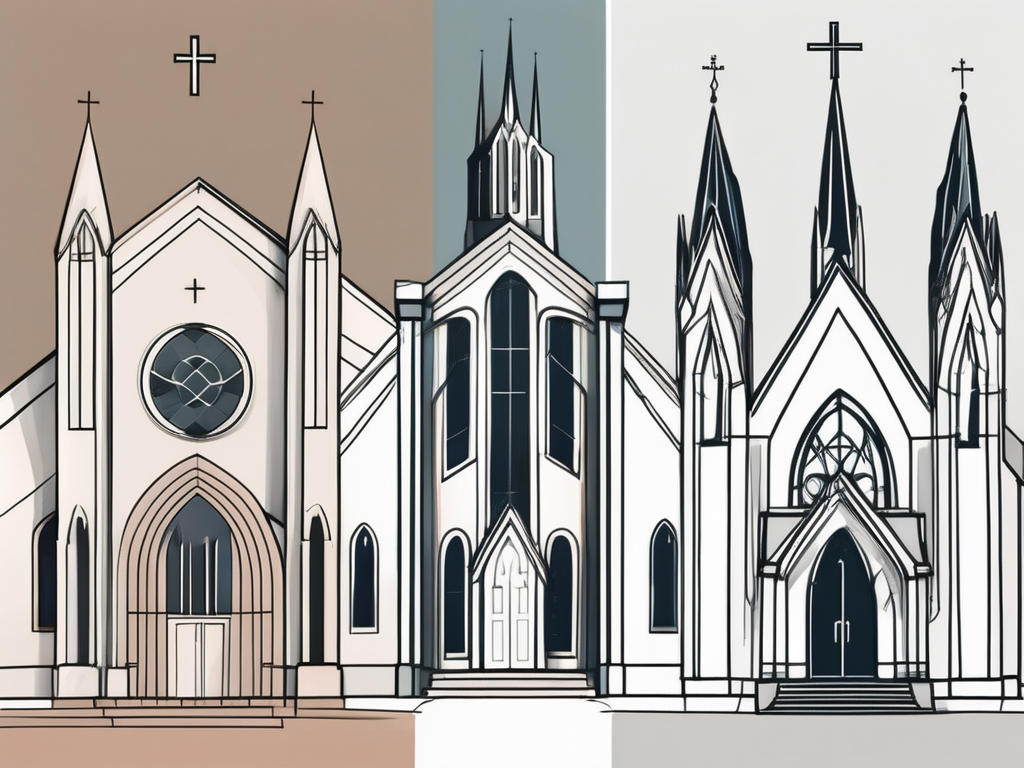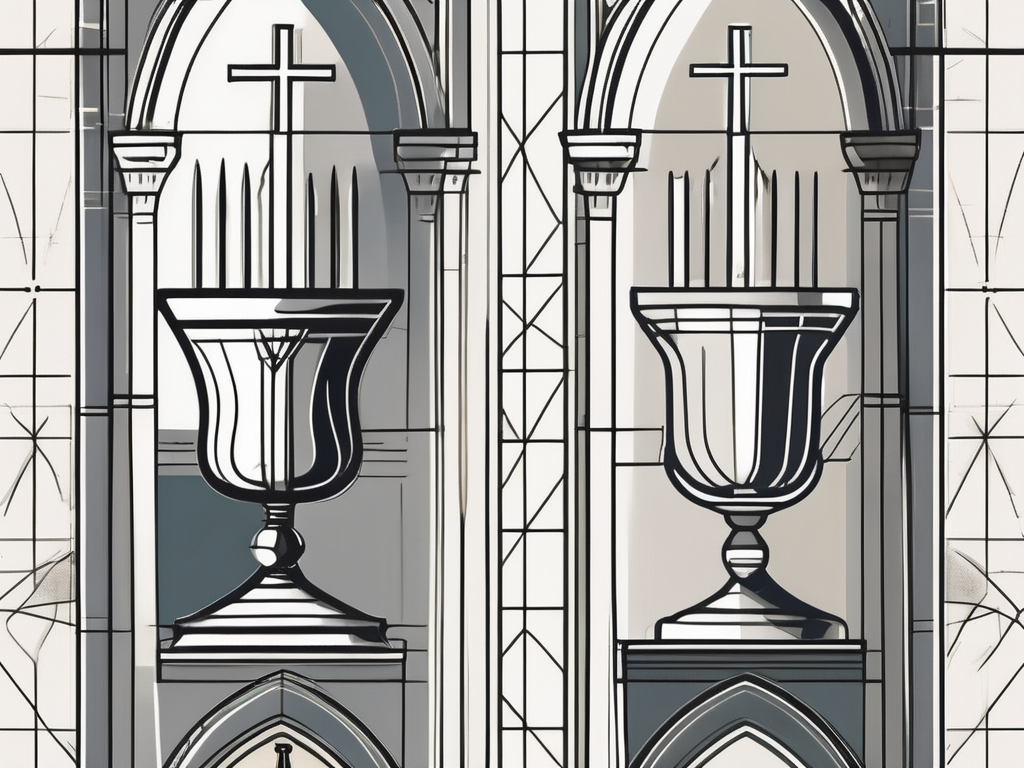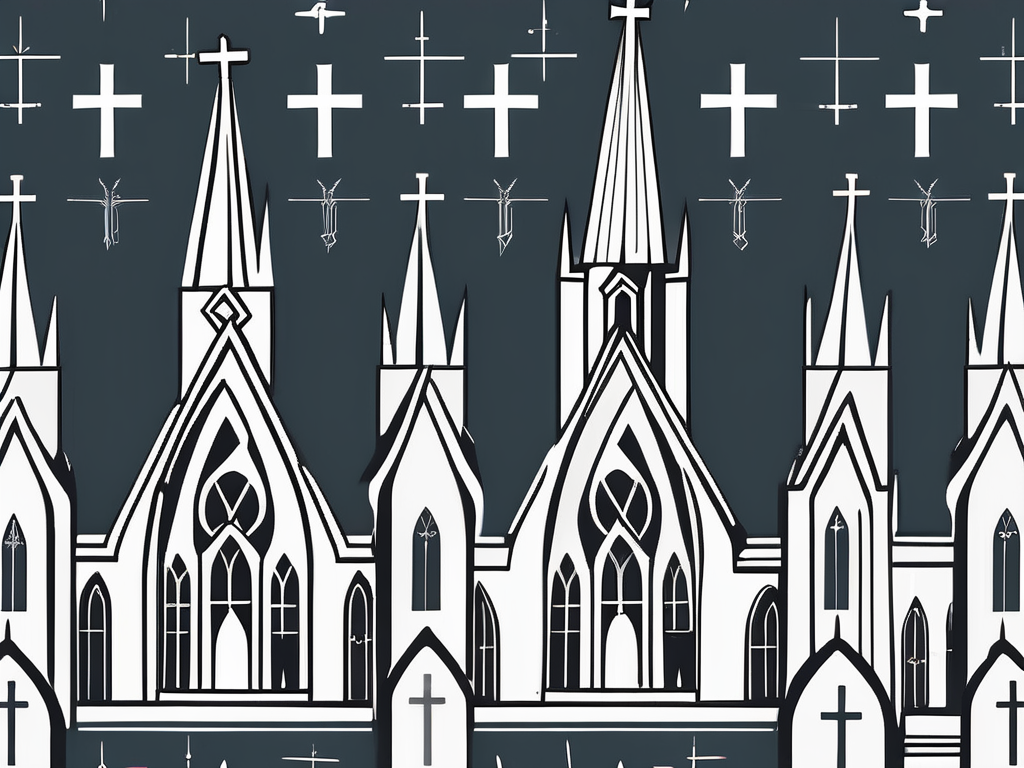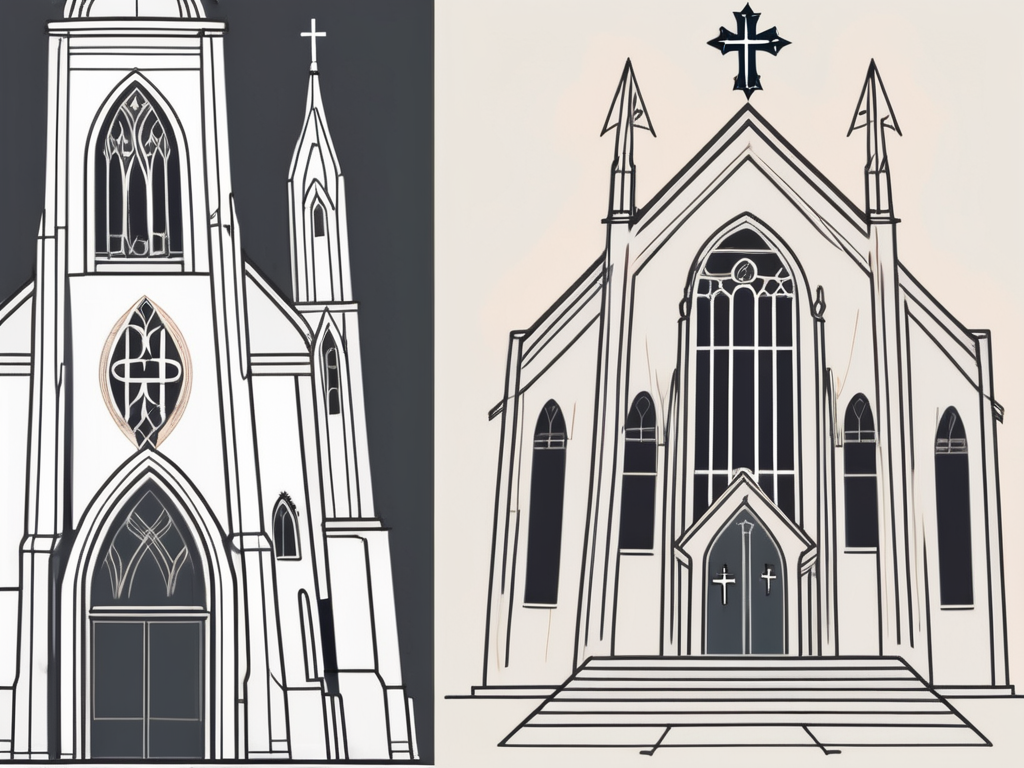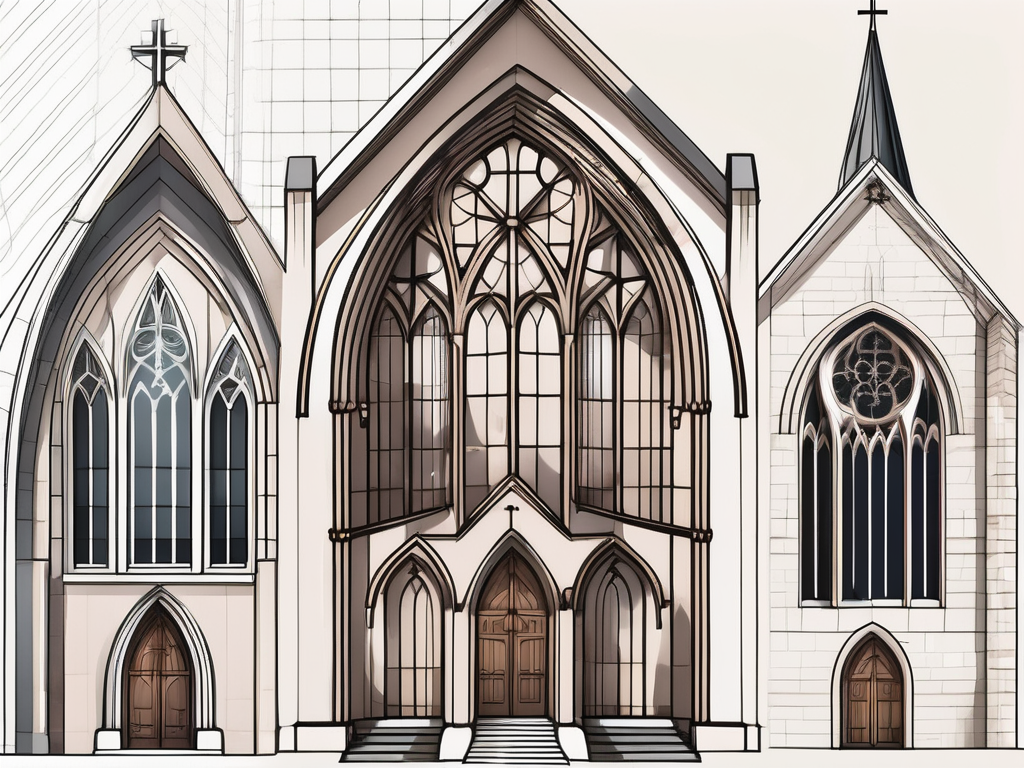Religion has always played a significant role in shaping societies and cultures around the world. One of the most prominent and influential religious divisions in history is between the Anglican and Catholic faiths. These two branches of Christianity have similarities but also distinct differences that set them apart. In this comparative analysis, we will explore the basics of Anglicanism and Catholicism, delve into their historical contexts, examine their theological disparities, analyze their liturgical differences, and understand their distinct systems of governance and structure.
Understanding the Basics: Anglicanism and Catholicism
Before we dive into the intricacies of Anglicanism and Catholicism, it’s essential to have a solid foundation of their key beliefs and practices. Both denominations are rooted in the Christian faith, embracing the teachings of Jesus Christ and the importance of salvation. However, they have diverging interpretations and approaches to their faith.
Anglicanism and Catholicism have rich histories that have shaped their beliefs and practices over the centuries. Let’s take a closer look at each denomination and explore their unique characteristics.
Defining Anglicanism: Key Beliefs and Practices
Anglicanism, also known as the Episcopal Church in certain regions, is characterized by its unique blend of Catholic and Protestant influences. It traces its origins back to the Church of England and places a strong emphasis on the Book of Common Prayer.
The Book of Common Prayer, first published in 1549, is a foundational text for Anglicans. It contains prayers, liturgies, and rituals that guide worship and provide a sense of unity among Anglican congregations worldwide. Anglicans believe in the Holy Trinity, the sacraments, and the authority of scripture.
Anglicanism values the importance of tradition while also embracing the need for adaptation and flexibility in response to changing times. This approach allows for a diverse range of practices and interpretations within the Anglican Communion, which consists of autonomous provinces spread across the globe.
Anglicans celebrate the sacraments, including baptism and the Eucharist, as visible signs of God’s grace. They believe in the real presence of Christ in the Eucharist, although the exact understanding of this varies among Anglicans. The sacraments are seen as means of encountering God’s love and receiving spiritual nourishment.
Defining Catholicism: Key Beliefs and Practices
Catholicism, on the other hand, is centered around the authority of the Pope and the Vatican. Catholics view the Pope as the successor of Saint Peter, considering him the vicar of Christ on Earth. They adhere to the teachings of the Bible, the Sacraments, and the importance of tradition passed down through the centuries.
The Catholic Church places great importance on the sacraments, considering them essential channels of God’s grace. These sacraments include baptism, confirmation, Eucharist, reconciliation, anointing of the sick, holy orders, and matrimony. Each sacrament is believed to confer a specific grace and strengthen the believer’s relationship with God.
Catholicism also emphasizes the role of tradition in interpreting and understanding the teachings of the Church. The Magisterium, which consists of the Pope and the bishops in communion with him, is entrusted with the authority to interpret scripture and guide the faithful in matters of faith and morals.
One distinctive aspect of Catholicism is the veneration of saints and the belief in their intercession. Catholics believe that saints, who are considered to be in the presence of God, can pray for those on Earth and help them in their spiritual journey.
Both Anglicanism and Catholicism have rich theological traditions and vibrant worship practices that continue to shape the lives of their adherents. While they share common roots in Christianity, their distinct beliefs and practices offer unique perspectives on the faith.
Historical Context: The Split from Rome
To fully comprehend the differences between Anglicanism and Catholicism, we need to delve into their historical origins. The split between these two denominations can be traced back to turbulent times in Europe, particularly in England.
During the 16th century, Europe was undergoing a period of profound change. The Renaissance had sparked a renewed interest in learning and the arts, while the Protestant Reformation was challenging the authority of the Catholic Church. England, under the rule of King Henry VIII, found itself at the center of this religious and political upheaval.
The Role of King Henry VIII
King Henry VIII’s quest for a male heir led to a significant turning point in English history. In 1534, Henry VIII separated from the Roman Catholic Church and established the Church of England, making himself the Supreme Head of the Church. This event, known as the English Reformation, set the stage for the emergence of Anglicanism as a distinct denomination.
Henry VIII’s decision to break away from Rome was not solely motivated by religious concerns. He sought an annulment from his first wife, Catherine of Aragon, in order to marry Anne Boleyn. When the Pope refused to grant the annulment, Henry took matters into his own hands and declared himself the head of the Church in England. This move allowed him to dissolve his marriage and marry Anne, thus securing the possibility of a male heir.
Theological Differences Leading to the Split
Although Henry VIII’s political motivations fueled the separation, theological disparities between the Church of England and the Catholic Church also played a substantial role. Anglicans began to embrace Protestant ideas, questioning elements of Catholic doctrine, such as the authority of the Pope and the doctrine of transubstantiation.
One of the key theological differences that emerged during the English Reformation was the concept of justification by faith alone. Influenced by the ideas of Martin Luther and other Protestant reformers, Anglicans rejected the Catholic belief in the necessity of good works for salvation. Instead, they emphasized the importance of faith in Jesus Christ as the sole means of obtaining salvation.
Another area of contention was the role of the clergy. While the Catholic Church maintained a hierarchical structure with the Pope at the top, Anglicans advocated for a more decentralized system. The Church of England adopted a model where authority was shared between the monarch, bishops, and clergy, allowing for greater independence and flexibility.
Furthermore, the Church of England sought to establish a distinct identity by promoting the use of English in religious services, rather than Latin. This decision was significant as it made the scriptures and liturgy more accessible to the common people, further distinguishing Anglicanism from Catholicism.
In conclusion, the split between Anglicanism and Catholicism was not solely a result of political maneuvering by King Henry VIII. The English Reformation was driven by a complex interplay of religious, political, and social factors. It marked a pivotal moment in history, shaping the religious landscape of England and leaving a lasting impact on the development of Anglicanism as a distinct denomination.
Theological Differences: Anglicanism vs Catholicism
Now that we have examined the historical context, let’s delve deeper into the theological divergences between Anglicanism and Catholicism. These differences have shaped the faith practices and outlooks of both denominations.
When it comes to the views on the sacraments, Anglicans and Catholics have distinct perspectives. While Catholicism recognizes seven sacraments, including Baptism, Confirmation, and the Holy Eucharist, Anglicanism maintains only two main sacraments: Baptism and Holy Communion. This distinction reflects their varying degrees of emphasis on particular rituals and practices.
Within the Anglican tradition, the sacrament of Baptism is seen as a means of initiation into the Christian faith, symbolizing the washing away of original sin and the beginning of a new life in Christ. Holy Communion, also known as the Eucharist, is considered a commemoration of Christ’s sacrifice on the cross and a means of receiving His body and blood. Anglicans believe in the real presence of Christ in the Eucharist, but the exact nature of this presence is a matter of theological debate within the denomination.
Catholics, on the other hand, view the sacraments as efficacious signs of God’s grace, through which believers receive spiritual nourishment and are brought closer to God. The Holy Eucharist, in particular, is considered the central act of worship and the source and summit of the Christian life. Catholics believe in the doctrine of transubstantiation, which holds that the bread and wine used in the Eucharist become the actual body and blood of Christ.
Another crucial divergence between Anglicanism and Catholicism lies in the interpretation of the Bible. Catholics interpret scripture through the lens of tradition, with the Magisterium (the teaching authority of the Church) guiding the faithful’s understanding. This means that the teachings of the Church, as passed down through the centuries, play a central role in interpreting and applying the Bible to contemporary life.
Anglicans, on the other hand, combine scripture, tradition, reason, and experience to interpret and decipher God’s Word. While they acknowledge the importance of tradition and the teachings of the early Church fathers, Anglicans also value the use of reason and personal experience in understanding the Bible. This approach allows for a diversity of theological perspectives within the Anglican Communion, as different individuals and communities engage with scripture in their own unique ways.
The role of the clergy also differs between Anglicanism and Catholicism. In the Catholic Church, priests are celibate males who have received the sacrament of Holy Orders. They act as mediators between God and the faithful, administering the sacraments and providing pastoral care. The hierarchical structure of the Catholic Church places great importance on the authority of ordained bishops, who oversee the spiritual life of their dioceses.
Anglicanism, on the other hand, follows a more decentralized approach to the role of the clergy. While Anglican priests share similar responsibilities to their Catholic counterparts, such as leading worship services and administering the sacraments, they have greater flexibility in terms of marriage and gender. Anglican priests may be either male or female and can marry, reflecting the diversity of Anglican theology and practice.
Furthermore, Anglicanism does not have a centralized authority figure equivalent to the Pope in Catholicism. Instead, the Anglican Communion is a loose federation of autonomous national and regional churches, each with its own governance structure. This allows for a greater degree of local decision-making and adaptability within the Anglican tradition.
These theological differences between Anglicanism and Catholicism have profound implications for the beliefs, practices, and structures of both denominations. While they share a common Christian heritage, the distinct perspectives on sacraments, interpretation of scripture, and the role of the clergy have shaped the identities and trajectories of Anglicanism and Catholicism throughout history.
Liturgical Differences: Worship and Rituals
In addition to their theological distinctions, Anglicanism and Catholicism differ in their worship styles and rituals. These variations greatly shape the experience and traditions within each denomination.
The Anglican Mass
The Anglican Mass, also known as the Holy Eucharist, emphasizes the use of the Book of Common Prayer and a structured liturgy that allows for flexibility in certain aspects of the service. Anglican worship tends to strike a balance between the formal and the informal, leaving room for individual expressions of faith.
The Catholic Mass
The Catholic Mass, often referred to as the Holy Sacrifice of the Mass, follows a more standardized liturgy outlined by the Vatican. The Mass incorporates ceremonies, rituals, and vestments that have deep historical and symbolic significance. Catholic worship embraces a more formal and reverent atmosphere.
Governance and Structure: A Comparative View
Besides theological disparities and liturgical differences, the organizational structures of Anglicanism and Catholicism are inherently unique. Let’s explore how these denominations govern themselves.
The Anglican Communion
The Anglican Communion is a loose federation of independent churches that share common roots and traditions. Each church has its governance structure, with bishops overseeing specific regions or dioceses. The Archbishop of Canterbury serves as the spiritual head of the Anglican Communion, holding a significant position of influence.
The Catholic Church Hierarchy
In contrast, the Catholic Church operates under a centralized hierarchy, with the Pope as the highest authority. Bishops and cardinals govern specific dioceses and regions, with the Pope presiding over all matters of doctrine and faith. This hierarchical structure ensures a uniformity of practice and belief throughout the Catholic Church.
In conclusion, the Anglican and Catholic denominations may share a common Christian foundation, but their distinct beliefs, practices, historical contexts, liturgical approaches, and governance structures set them apart. Understanding these differences enhances our comprehension of the historical, social, and cultural influences that have shaped these two influential branches of Christianity. By appreciating both the similarities and disparities, we can foster a deeper understanding and respect for religious diversity.



